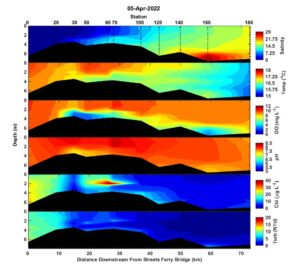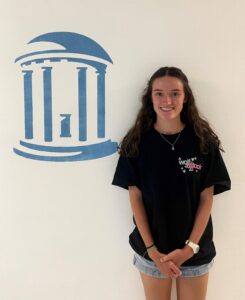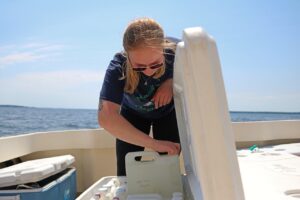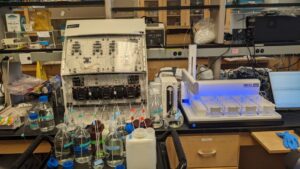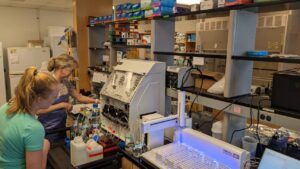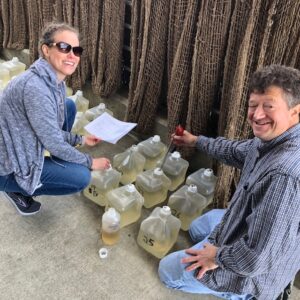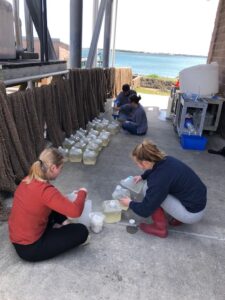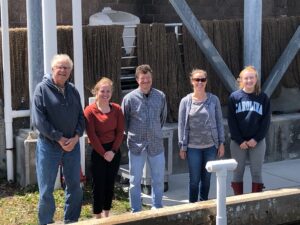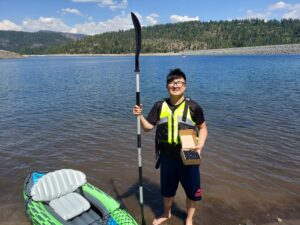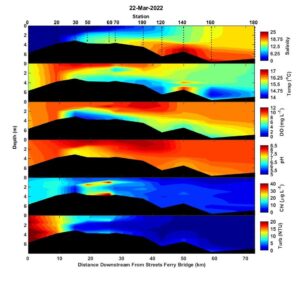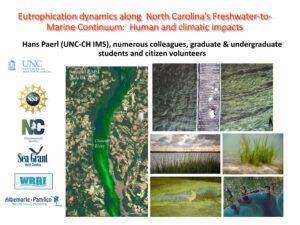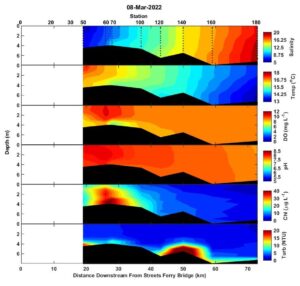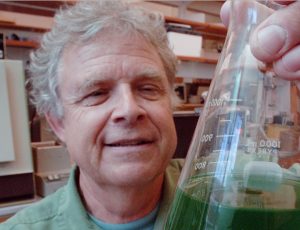River flow has been below normal for most of the spring but there were some high flows in late March. On April 5, the upper estuary was freshened by those high flows with surface salinity < 5 downstream to station 70. Surface salinity at the mouth was ~18 which is unusually salty for spring. Despite cool water temperatures (< 20 C), low bottom water dissolved oxygen (< 4 mg/L) was observed in the upper estuary at stations 30 and 50 and within the high salinity intrusion of bottom water from the intercoastal waterway at station 160.
A subsurface zone of high chlorophyll a was observed along the pycnocline at ~ 2 m depth at stations 60 and 70. Microscopic analysis of surface water from station 60 showed a mixed bag of spring dinoflagellates, Prorocentrum minimum, Heterocapsa rotundata, Heterocapsa triquetra, small centric diatoms, and cryptophytes. These dominant species are not known to produce toxins. Karlodinium veneficum, a toxic fish killing dinoflagellate, was present in low numbers. Turbidity was highest (8-10 NTU) at the head of the estuary. Throughout the rest of the estuary turbidity mainly ranged from 2-3 NTU except at stations 60 and 70 within the zone of high phytoplankton biomass where turbidity was ~5 NTU.
-Nathan
